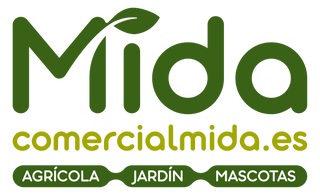Fungi are organisms belonging to the so-called Fungi Kingdom. They are found in almost all environments and their distribution is cosmopolitan. It is estimated that there may be close to a million species, although only about 100,000 are described. They are filamentous organisms, whose reproduction is done by means of spores of variable type and size. They feed by entering the food and absorbing nutrients resulting from decomposition processes. Phytopathogenic fungi are the cause of diseases in plants.
The presence of the infectious organism is not sufficient for disease to occur. There are three factors necessary for the occurrence of a disease:
For the chemical control of pathogenic fungi, thefungicides. These plant protection products They may be able to eliminate fungi and some even have the ability to grant resistance protection to the host plant against new attacks. They make up the main group of chemical products used for the management and control of plant diseases.
Once these phytosanitary products are applied, they can act on the surface of the plant (contact), penetrate and move within it (penetrating) or even reach the vascular system and move through it (systemic).
CONTACT FUNGICIDES
Contact fungicides prevent new infections for a while , because they prevent the germination of the fungus spores; they have little effect if the infection is already established. They also do not protect new shoots after application, so reapplications are required. They are usually preventive in nature and their residual effect ranges from 7 to 10 days.
PENETRATING FUNGICIDES
Penetrating fungicides generally move to the tips of the leaves or through them.
SYSTEMIC FUNGICIDES
Systemic fungicides move through the vascular system of plants and are selective, affecting only exclusive parts of the fungi.
Fungicides are used as a curative measure (infection already installed) and also preventive (when there is accelerated growth of the plant). They can be applied directly to the plant or with irrigation water, being absorbed by the leaves or roots.
Fungicides are also classified according to the number of pathogens they attack. A fungicide that attacks a low number of fungi is considered specific. On the other hand, one that attacks several species of fungi is considered broad-spectrum. Depending on the site of action, these products can be divided into single sites (they have a single site of action, generally contact sites) and multisites (they act on several sites, systemic and penetrating). Single-site fungicides have a higher risk of developing resistance when compared to multi-site fungicides. At present, fungicides with only one site of action have a low impact on the environment.
Advice of Commercial Mida
The successive use of the same active ingredient can generate resistance, making the fungus less sensitive to the fungicide due to long-term selection. Once a fungus becomes resistant to a fungicide, that fungicide loses its effectiveness. As a measure to combat resistance, it is recommended to alternate the active ingredients applied to the crop and apply other non-chemical control measures, such as applications spaced over time as indicated by the manufacturers, use of resistant cultivars and cultural measures.
If you need to acquire fungicides, whether for domestic or professional use, do not hesitate to contact us or visit ourFungicide Shop.



